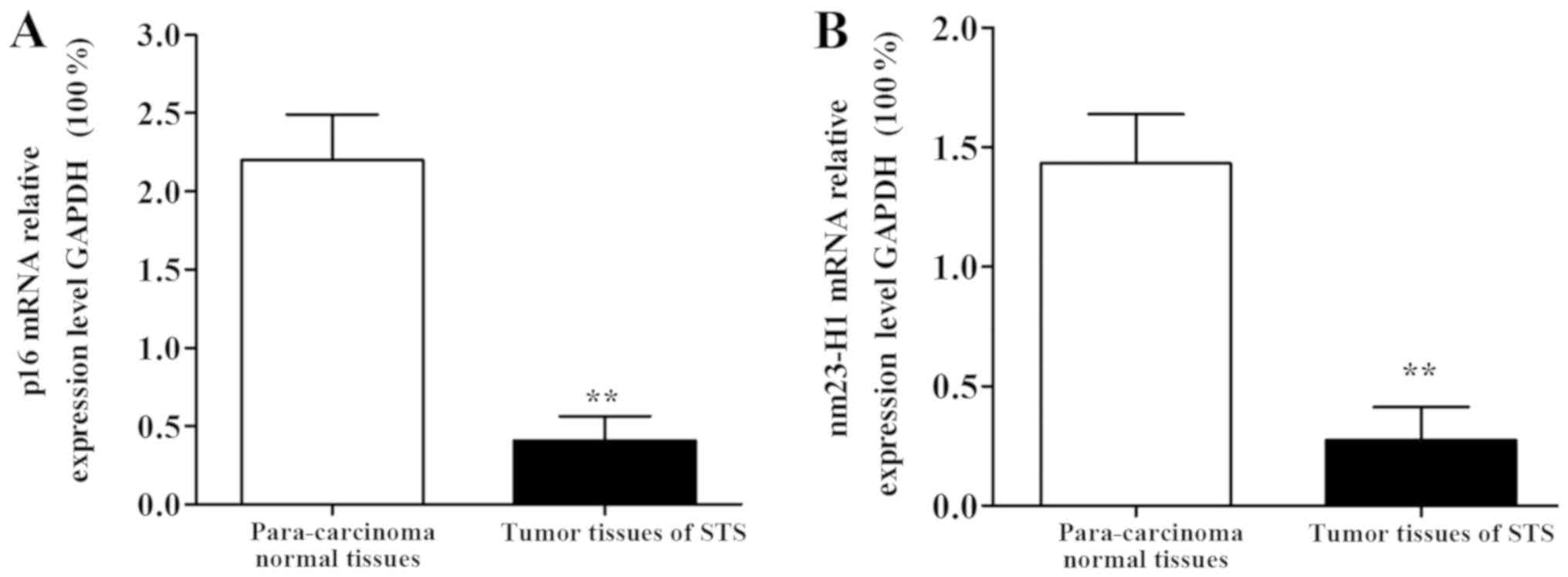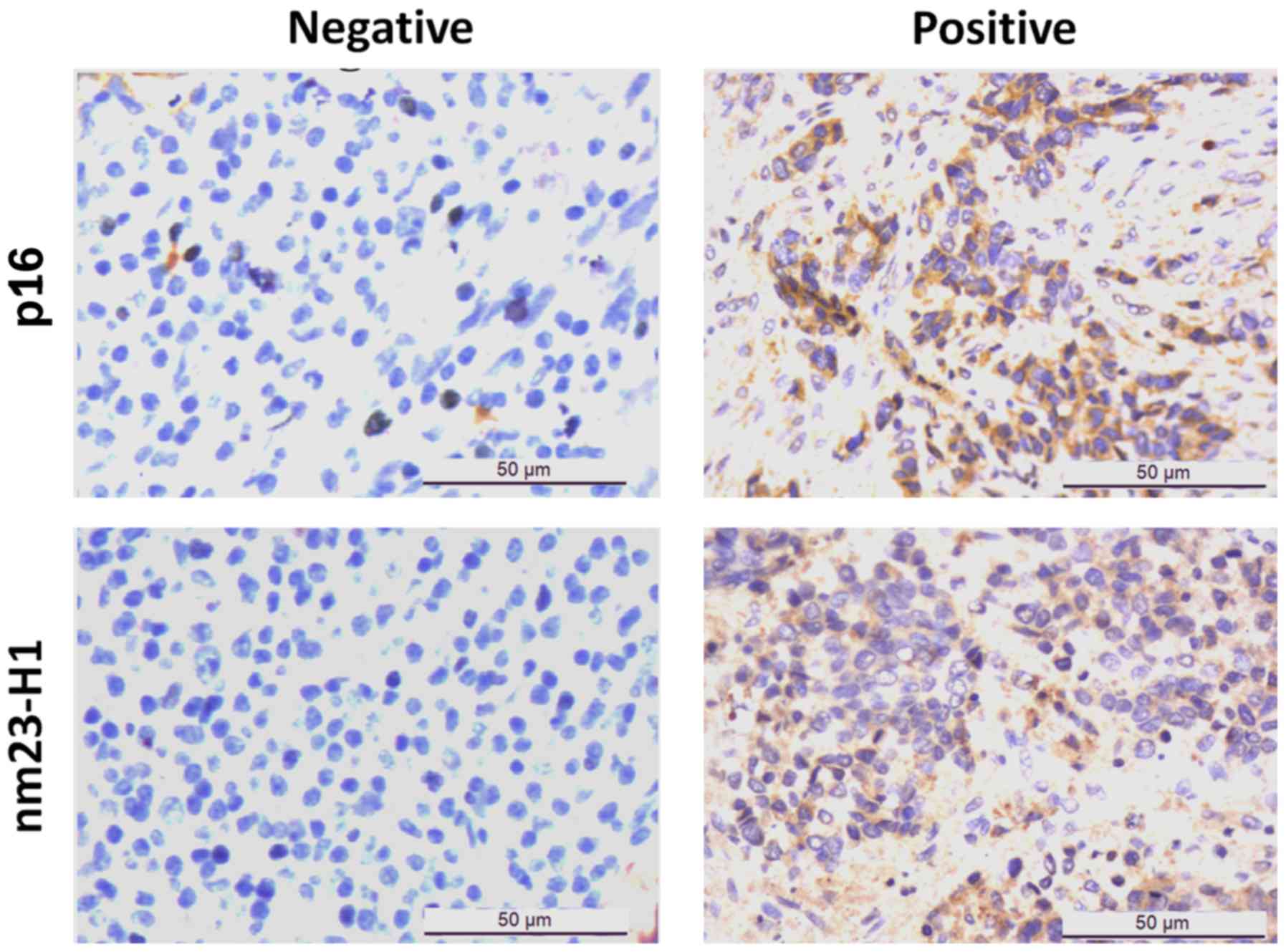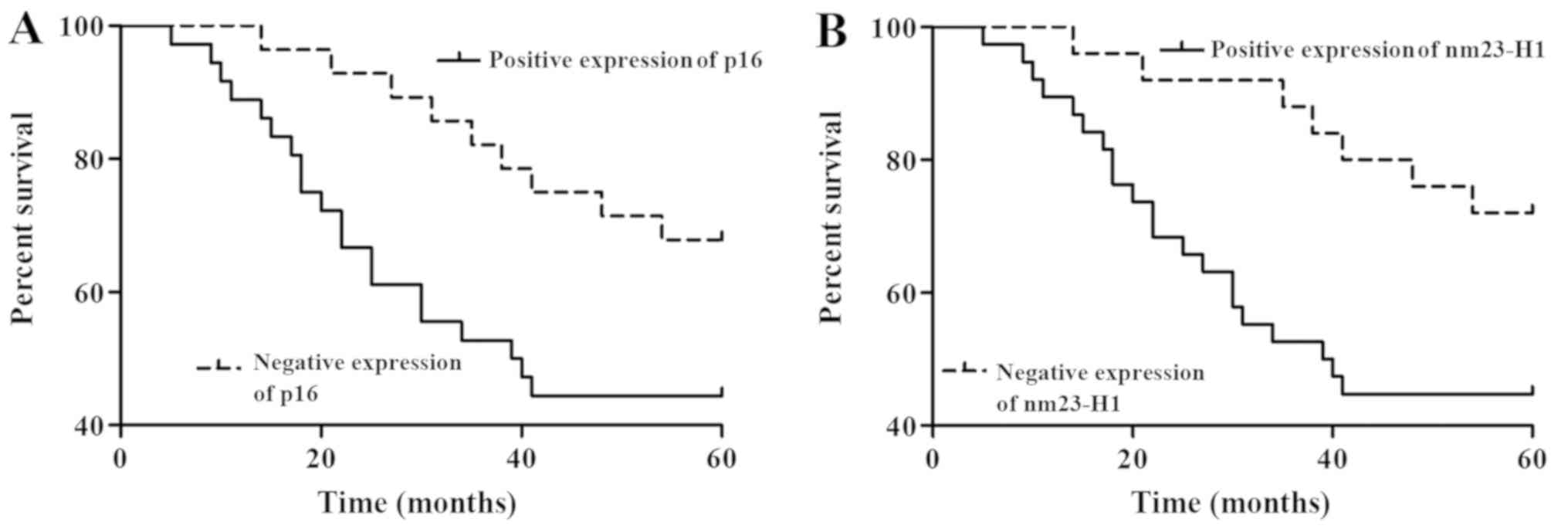|
1
|
Doyle LA: Sarcoma classification: An
update based on the 2013 World Health Organization Classification
of Tumors of Soft Tissue and Bone. Cancer. 120:1763–1774. 2014.
View Article : Google Scholar : PubMed/NCBI
|
|
2
|
Fletcher CDM, Bridge JA, Hogendoorn PCW
and Mertens F: WHO Classification of Tumours of Soft Tissue and
Bone. (Fourth). 5:IARC Press. (Lyon). 95–104. 2013.
|
|
3
|
Jemal A, Bray F, Center MM, Ferlay J, Ward
E and Forman D: Global cancer statistics. CA Cancer J Clin.
61:69–90. 2011. View Article : Google Scholar : PubMed/NCBI
|
|
4
|
Shi YQ, Zong XY, Wang J and Li S: Clinical
analysis of 251 cases of soft tissue sarcomas. Zhonghua Wai Ke Za
Zhi. 41:116–118. 2003.(In Chinese). PubMed/NCBI
|
|
5
|
Bannasch H, Eisenhardt SU, Grosu AL, Heinz
J, Momeni A and Stark GB: The diagnosis and treatment of soft
tissue sarcomas of the limbs. Dtsch Arztebl Int. 108:32–38.
2011.PubMed/NCBI
|
|
6
|
Ruymann FB and Grovas AC: Progress in the
diagnosis and treatment of rhabdomyosarcoma and related soft tissue
sarcomas. Cancer Invest. 18:223–241. 2000. View Article : Google Scholar : PubMed/NCBI
|
|
7
|
Kashiwabara K, Oyama T, Sano T, Fukuda T
and Nakajima T: Correlation between methylation status of the
p16/CDKN2 gene and the expression of p16 and Rb proteins in primary
non-small cell lung cancers. Int J Cancer. 79:215–220. 1998.
View Article : Google Scholar : PubMed/NCBI
|
|
8
|
Steeg PS, Bevilacqua G, Kopper L,
Thorgeirsson UP, Talmadge JE, Liotta LA and Sobel ME: Evidence for
a novel gene associated with low tumor metastatic potential. J Natl
Cancer Inst. 80:200–204. 1988. View Article : Google Scholar : PubMed/NCBI
|
|
9
|
Parhar RS, Shi Y, Zou M, Farid NR, Ernst P
and al-Sedairy ST: Effects of cytokine-mediated modulation of nm23
expression on the invasion and metastatic behavior of B16F10
melanoma cells. Int J Cancer. 60:204–210. 1995. View Article : Google Scholar : PubMed/NCBI
|
|
10
|
Okada K, Urano T, Goi T, Baba H, Yamaguchi
A, Furukawa K and Shiku H: Isolation of human nm23 genomes and
analysis of loss of heterozygosity in primary colorectal carcinoma
using a specific genomic probe. Cancer Res. 54:3979–3982.
1994.PubMed/NCBI
|
|
11
|
Livak KJ and Schmittgen TD: Analysis of
relative gene expression data using real time quantitative PCR and
the 2(Delta Delta C(T)) method. Methods. 25:402–408. 2001.
View Article : Google Scholar : PubMed/NCBI
|
|
12
|
Jemal A, Siegel R, Ward E, Hao Y, Xu J and
Thun MJ: Cancer statistics, 2009. CA Cancer J Clin. 59:225–249.
2009. View Article : Google Scholar : PubMed/NCBI
|
|
13
|
Casali PG and Blay JY:
ESMO/CONTICANET/EUROBONET Consensus Panel of experts: Soft tissue
sarcomas: ESMO Clinical Practice Guidelines for diagnosis,
treatment and follow-up. Ann Oncol. 21 Suppl 5:v198–v203. 2010.
View Article : Google Scholar : PubMed/NCBI
|
|
14
|
Campos M, De Campos SG, Ribeiro GG, Eguchi
FC, Silva SR, De Oliveira CZ, Da Costa AM, Curcelli EC, Nunes MC,
Penna V, et al: Ki-67 and CD100 immunohistochemical expression is
associated with local recurrence and poor prognosis in soft tissue
sarcomas, respectively. Oncol Lett. 5:1527–1535. 2013. View Article : Google Scholar : PubMed/NCBI
|
|
15
|
Ch'ng E, Tomita Y, Zhang B, He J, Hoshida
Y, Qiu Y, Morii E, Nakamichi I, Hamada K, Ueda T, et al: Prognostic
significance of CD100 expression in soft tissue sarcoma. Cancer.
110:164–172. 2007. View Article : Google Scholar : PubMed/NCBI
|
|
16
|
Merlo A, Herman JG, Mao L, Lee DJ,
Gabrielson E, Burger PC, Baylin SB and Sidransky D: 5′ CpG island
methylation is associated with transcriptional silencing of the
tumour suppressor p16/CDKN2/MTS1 in human cancers. Nat Med.
1:686–692. 1995. View Article : Google Scholar : PubMed/NCBI
|
|
17
|
Reimers N, Kasper HU, Weissenborn SJ,
Stützer H, Preuss SF, Hoffmann TK, Speel EJ, Dienes HP, Pfister HJ,
Guntinas-Lichius O, et al: Combined analysis of HPV-DNA, p16 and
EGFR expression to predict prognosis in oropharyngeal cancer. Int J
Cancer. 120:1731–1738. 2007. View Article : Google Scholar : PubMed/NCBI
|
|
18
|
Fan X, Yu K, Wu J, Shao J, Zhu L and Zhang
J: Correlation between squamous cell carcinoma of the lung and
human papillomavirus infection and the relationship to expression
of p53 and p16. Tumour Biol. 36:3043–3049. 2015. View Article : Google Scholar : PubMed/NCBI
|
|
19
|
Postel EH: NM23-NDP kinase. Int J Biochem
Cell Biol. 30:1291–1295. 1998. View Article : Google Scholar : PubMed/NCBI
|
|
20
|
Valentijn LJ, Koster J and Versteeg R:
Read-through transcript from NM23-H1 into the neighboring NM23-H2
gene encodes a novel protein, NM23-LV. Genomics. 87:483–489. 2006.
View Article : Google Scholar : PubMed/NCBI
|
|
21
|
Lacombe ML, Milon L, Munier A, Mehus JG
and Lambeth DO: The human nm23/nucleoside diphosphate kinases. J
Bioenerg Biomembr. 32:247–258. 2000. View Article : Google Scholar : PubMed/NCBI
|

















